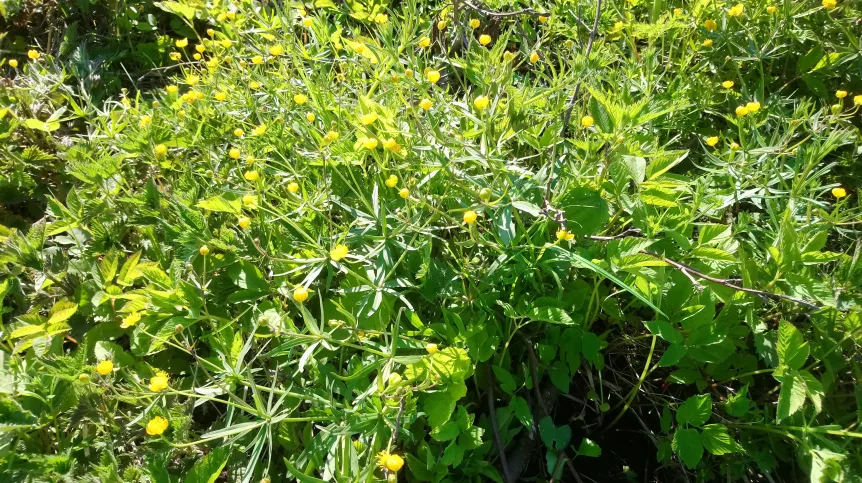
Three new species of buttercups have been identified near Darłowo in Western Pomerania by Dr. Adam T. Halamski from the Institute of Paleobiology of the Polish Academy of Sciences. The new species: the Amalasuntha buttercup, the Griffin buttercup and the Darłowo buttercup, were named to commemorate, among others, the queen of the Ostrogoths and the Pomeranian Griffin dynasty.
Buttercups (Ranunculus), well-known in Poland, include about 600 species of flowering plants. The newly discovered specimens belong to the heterophyllous species group - Ranunculus auricomus, growing in the temperate zone of Europe and Asia. It is a so-called collective species, consisting of many microspecies. In the area around the city of Darłowo in Western Pomerania, variegated buttercups are quite common and grow mainly in semi-natural habitats, on roadsides, slopes, and forest edges.
Dr. Halamski collected buttercups from the region from 2010 to 2023. As a result of his work, three new species were identified and given names that refer to the region of their occurrence, i.e. Pomerania.
The Amalasuntha buttercup (Ranunculus amalasuinthae) was named after Amalasuntha, the queen of the Ostrogoths, who died in 525. One of the sites of this buttercup is located about 20 km from the Goth cemetery in Grzybnica.
The second discovered species is the Griffin buttercup (Ranunculus gryphum) identified on the Koszalin Coast in Barzowice. It commemorates the Griffin dynasty that ruled the Duchy of Pomerania until 1637.
In turn, the Darłowo buttercup (Ranunculus dirlovus) was discovered near the town of Darłowo. The oldest mention of this geographical name comes from 1205, when the place was described as Terra Dirlova, hence the name of the new species. 'The group of heterophyllous buttercups differs from other buttercups in that, first of all, their basal leaves, growing from the base of the stem, have very different shapes depending on the age of the plant - the first early spring leaves are different from the ones growing during the flowering period of the plant, and finally the last ones, produced when the buttercup bears fruit, are different still. In turn, the stem leaves are divided into segments, which is not the case with any other buttercups. Species are distinguished based on morphological details, mainly the characteristics of the leaves', Dr. Halamski tells PAP.

The identification process was therefore time-consuming and required many analyses, because individual species differ minimally, e.g. in segments of stem leaves, more or less divided basal leaves, shapes of flower bases.
'During such work, leaf cycles are compared, i.e. combinations of leaves from the first early spring to the last late spring. You have to visit the buttercup site at least twice to collect them at the beginning and at the end of the growing season’, Dr. Halamski says.
The discovery of as many as three unique species in Pomerania, each of which is represented by only a few populations, may result from the insufficient number of floristic studies in the region. Over 95 percent of the flower material for the studies from 2010-2023 was collected by Dr. Halamski.
A few years ago, the researcher also discovered a new species of buttercup near Warsaw, in an oak-hornbeam forest in Lipka (Nature Reserve 'Dębina'). The species Ranunculus kobendzae was named after Roman Kobendza, a Polish botanist and dendrologist. The Kobendza buttercup also occurs in three other places in central Poland: the Słupca Forest, the towns of Brańszczyk and Błogie.
The new species from Pomerania have been described in Bulletin de la Société linnéenne de Lyon.
PAP - Science in Poland, Ewelina Krajczyńska-Wujec
ekr/ agt/ kap/
tr. RL













